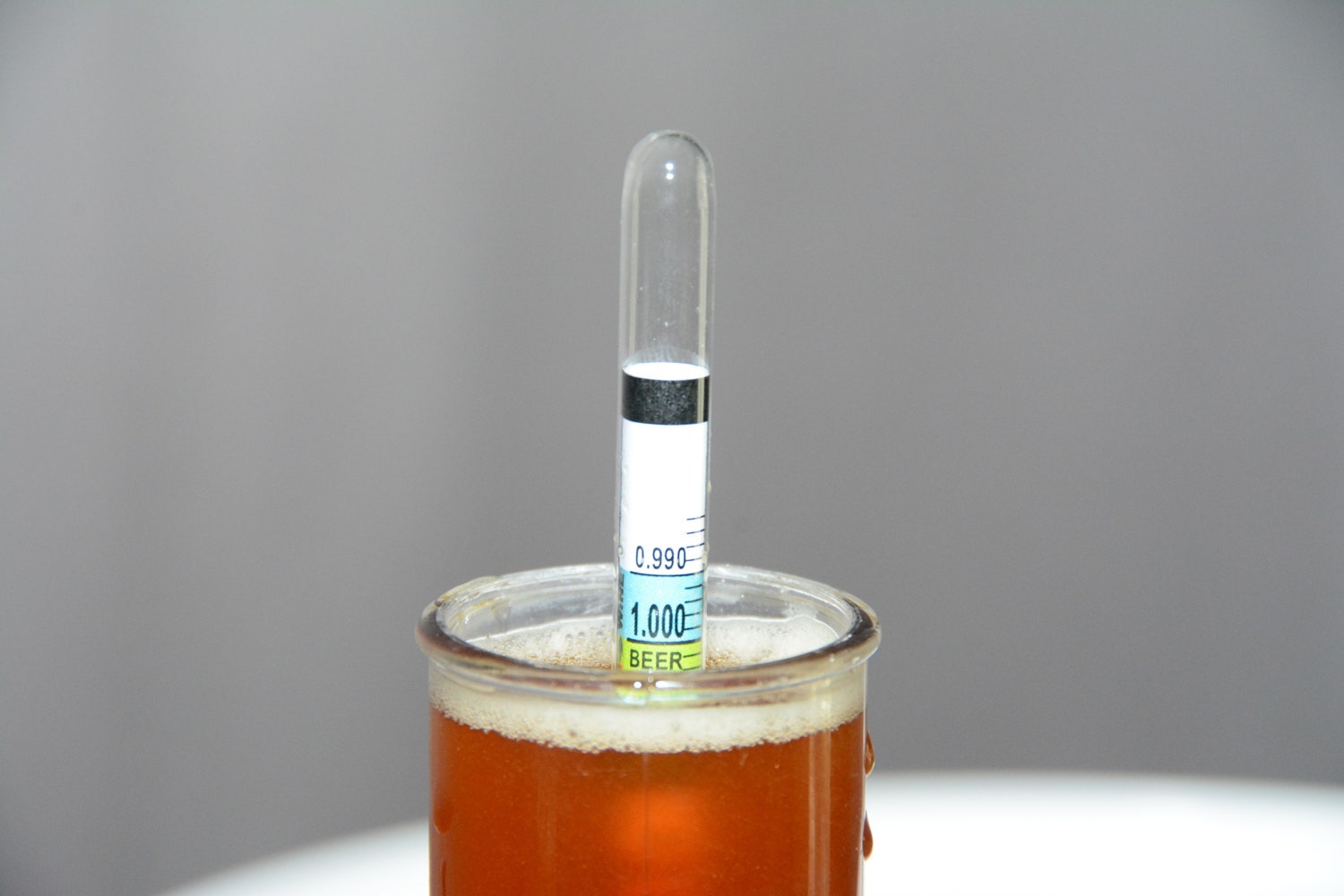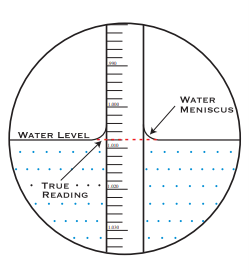How to use a hydrometer?

If you are a brewer, the term “hydrometer”, is probably one you have heard before and you may or may not use one. If you do use a hydrometer or want to use one, then this article is for YOU! Today I will break down what a Hydrometer is and how to use it, as well as some other helpful information and resources.
What is a Hydrometer, anyway? A Hydrometer is a scientific tool that measures the density of a liquid in relation to water. In the case of beer making, we are measuring how much sugar is in the solution. The more sugar that is in the solution, the higher the hydrometer will float. As sugar is turned into alcohol during the fermentation, the hydrometer will slowly sink lower in the solution. When fermentation is finished, the hydrometer will stop sinking.
Why would I use a hydrometer, when I can just taste my beer and make sure it is not sweet? A Hydrometer is an instrument used to measure the progress of fermentation and determine alcohol percentage. With our refills and many of our recipes, “tasting” is a fine way to determine the completion of fermentation, however, with recipes, especially those containing non-fermentable sweeteners like lactose sugar, using a hydrometer can help you to determine if your beer is fully fermented despite the remaining “sweet taste”.
How do I use my hydrometer? Place a sample of the liquid to be tested into the hydrometer testing tube and lower the hydrometer into the sample. Ideally, you want to add enough beer to your sample tube, that when the hydrometer is added, the fluid level fills up the tube almost completely. Spin the hydrometer to eliminate any air bubbles that might cling to the side of the hydrometer. Once the Hydrometer stops moving, take your first reading from the gravity scale. Make sure it is not clinging to the tube itself. In beer making, the first reading is often called the “Original Gravity Reading”, which implies it was taken prior to the onset of fermentation and before the addition of any yeast.
How do I determine if fermentation is finished? When fermentation stops, usually activity within the fermenter is no longer visible and your wort will smell like beer. This is the time to take a final hydrometer reading and record it on your recipe or log sheet. If you are unsure if fermentation is over, you can use your Hydrometer to test. Take two readings 1–2 days apart. If the reading drops between the two days, you still have an active fermentation.
Does the temperature of my sample affect my reading? YES. Typically, hydrometers are calibrated to give an accurate reading at approximately 68 °F. This means that if the temperature of the liquid being tested is something other than 68 °F, the Temperature Correction must be considered when determining the accurate gravity reading. There are many online charts and calculators that make this simple for you, but you can also use this chart and equation, as a guide for your corrections.




Here’s an example of this correction equation, in action:
If the temperature of the “Wort” is 84 °F. and the Specific
Gravity is 1.040, the true reading would be:
How do I determine the alcohol percentage of my beer? The most accurate way to determine alcohol percentage by volume in beer is to make an Original Gravity reading and Final Gravity reading. Then plug those numbers into the following formula:
(Original Gravity Reading”) - (Final Gravity Reading”) x (131) = % Alcohol Content by volume.
Example: 1.073 was the Original Gravity reading and 1.012 is the Final Gravity reading.: 1.073-1.012=.06 x 131 = 7.99% Alc. By Vol
How do I know what numbers to record? Once your hydrometer has stabilized and is floating in the solution, you will want to record the number directly below the meniscus of the water.
You can use this diagram as a guide.


Once you have tested your beer, do not be tempted to return the sample back to the fermenter, as this can potentially infect your batch. Plus, it’s a lot more fun to just drink it!
What about a refractometer? Can I use one of those? Yes and no. Refractometers, while convenient because they use a smaller sample, do not provide accurate readings beyond determining the original gravity, prior to any fermentation. Refractometers can be used to simply determine if the beer is still in active fermentation, but the actual figures provided will not be accurate.
How can I test that my hydrometer is providing accurate readings? Easy! Chill some distilled water and add it to your clean sample tube, insert your hydrometer, spin, and observe the waterline at the “true reading”, right below the meniscus. If your hydrometer is working correctly, and your distilled water is at 68 degrees, you should get a read of 1.000.
Well, there you have it, folks! The highly requested, written “How to” on using your hydrometer! I hope you found this helpful, and feel free to ask any questions in the comments or you can also contact us directly by emailing customerservice@mrbeer.com and we are happy to help! If math and equations just aren’t your thing, check out these amazing free calculators, found here: https://www.brewersfriend.com/hydrometer-temp/
https://www.brewersfriend.com/abv-calculator/
Happy Brewing!
Ashley





